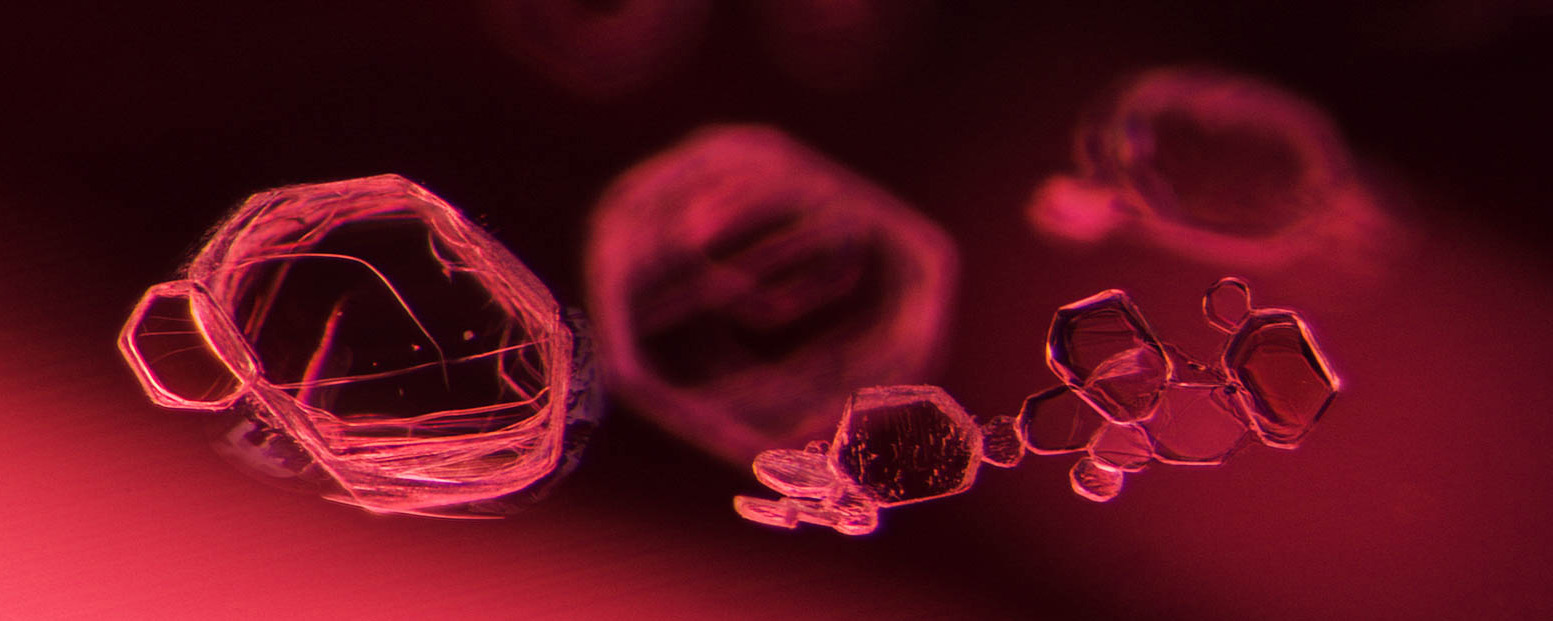A look into the world of spinel inclusions that goes beyond simple octahedral crystals.
Spinel Inclusions | Beyond Octahedra
When gemology students are taught about spinel, one of the first things they are told to look for are octahedral crystals. These echo the form of spinel crystals and look like little bipyramid shapes inside the spinel. Although they are a classic, diagnostic feature, there are many other interesting inclusions to be found in the spinel realm. The following are a few examples the author has had the opportunity to photograph in the laboratory.
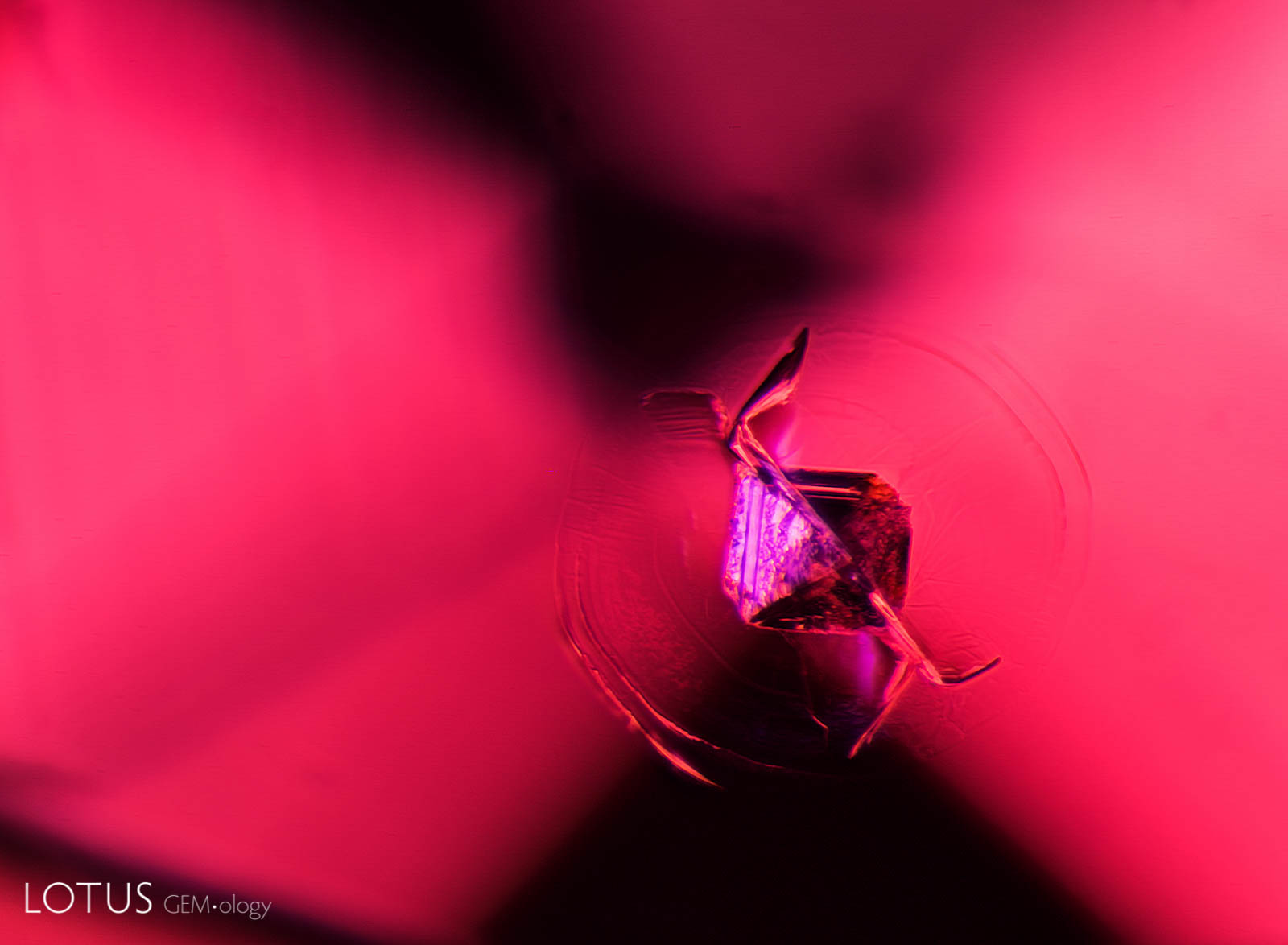 Above is an octahedral crystal, a typical feature to look for when identifying spinel. Darkfield + oblique fiber optic illumination. Photo: E. Billie Hughes
Above is an octahedral crystal, a typical feature to look for when identifying spinel. Darkfield + oblique fiber optic illumination. Photo: E. Billie Hughes
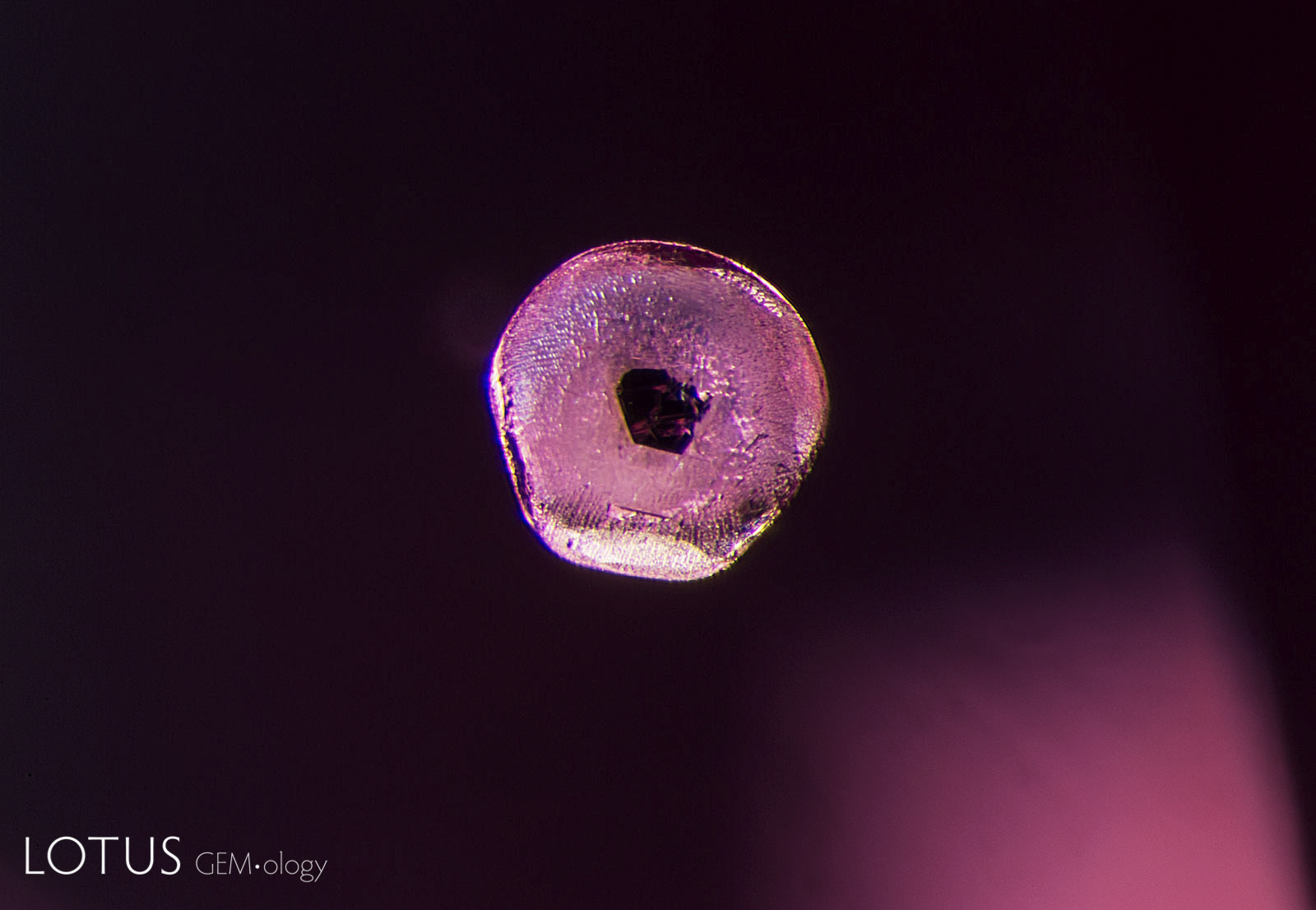 We are sure Homer Simpson would love this one! This donut-shaped inclusion is an apatite crystal, common in spinel from both Burma and Sri Lanka. The black flake in the center is actually a graphite crystal, creating what master photomicrographer John Koivula has whimsically nicknamed “belly button” apatite crystals. Oblique fiber optic illumination. Photo: E. Billie Hughes
We are sure Homer Simpson would love this one! This donut-shaped inclusion is an apatite crystal, common in spinel from both Burma and Sri Lanka. The black flake in the center is actually a graphite crystal, creating what master photomicrographer John Koivula has whimsically nicknamed “belly button” apatite crystals. Oblique fiber optic illumination. Photo: E. Billie Hughes
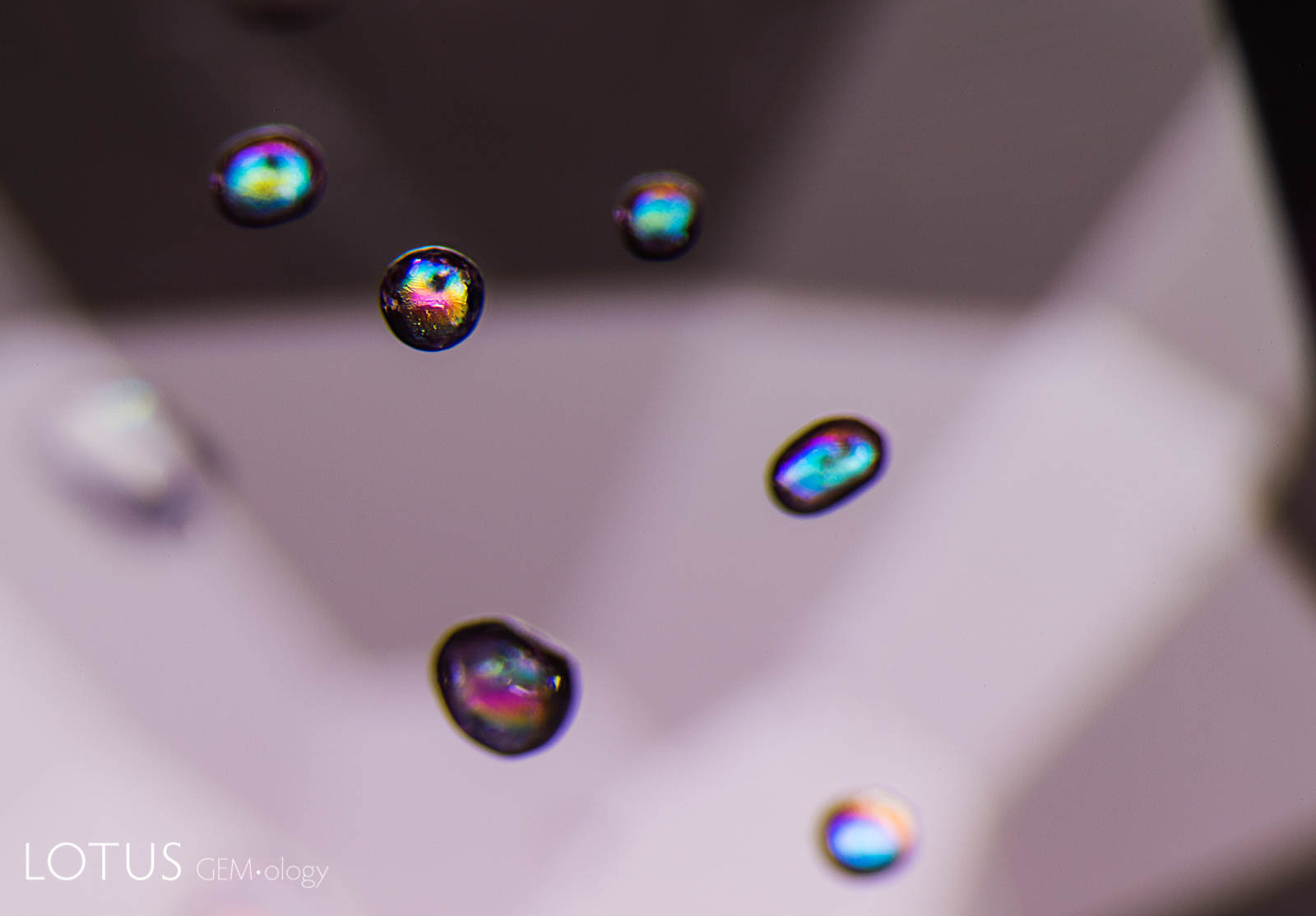 More apatite crystals on display. When viewed under crossed polars as shown above, the crystals display a rainbow of interference colors. Photo: E. Billie Hughes
More apatite crystals on display. When viewed under crossed polars as shown above, the crystals display a rainbow of interference colors. Photo: E. Billie Hughes
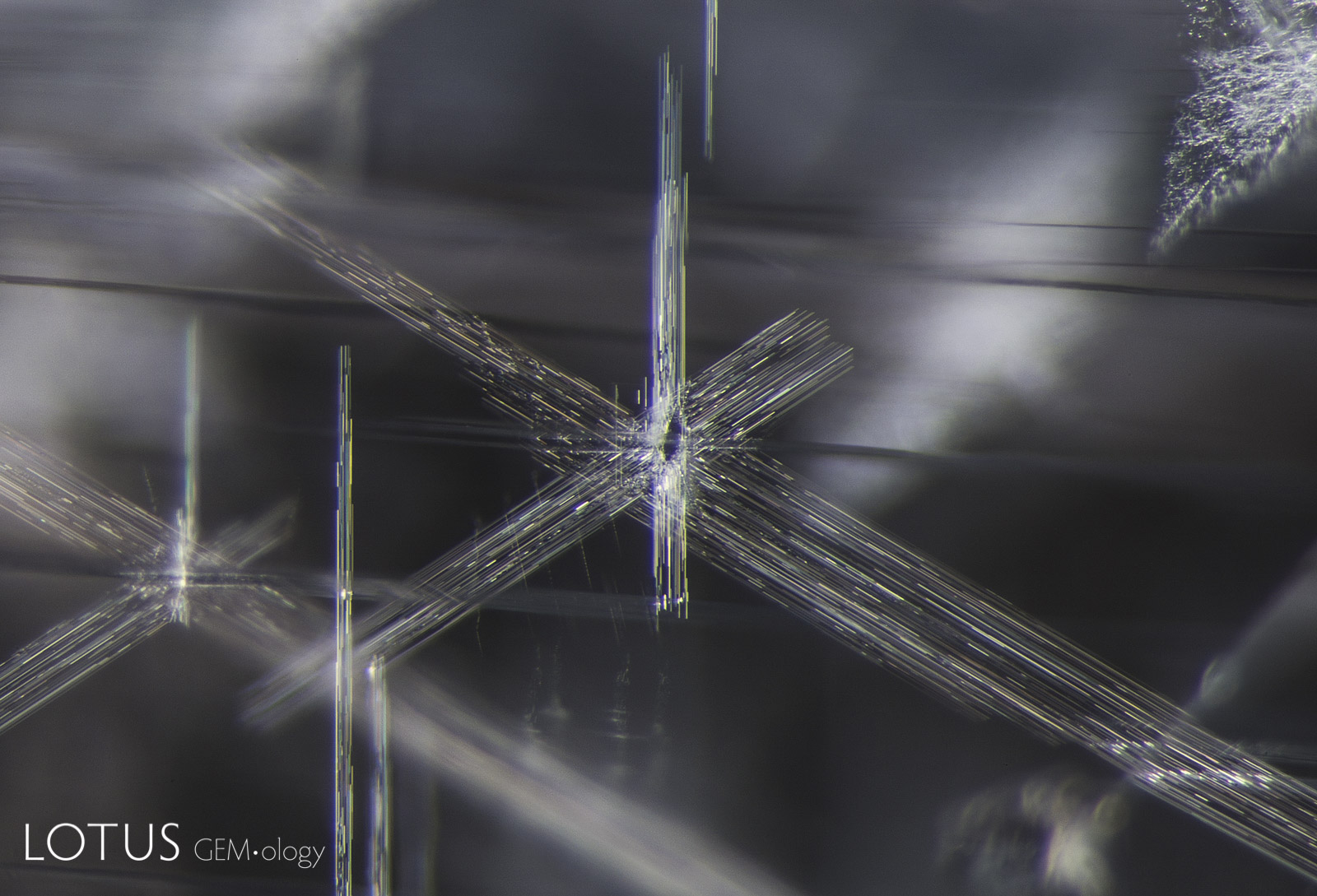 Stellate dislocations decorate the interior of this spinel from Vietnam. We also often see such dislocation needles in material from Sri Lanka. Diffuse oblique fiber optic illumination. Photo: E. Billie Hughes
Stellate dislocations decorate the interior of this spinel from Vietnam. We also often see such dislocation needles in material from Sri Lanka. Diffuse oblique fiber optic illumination. Photo: E. Billie Hughes
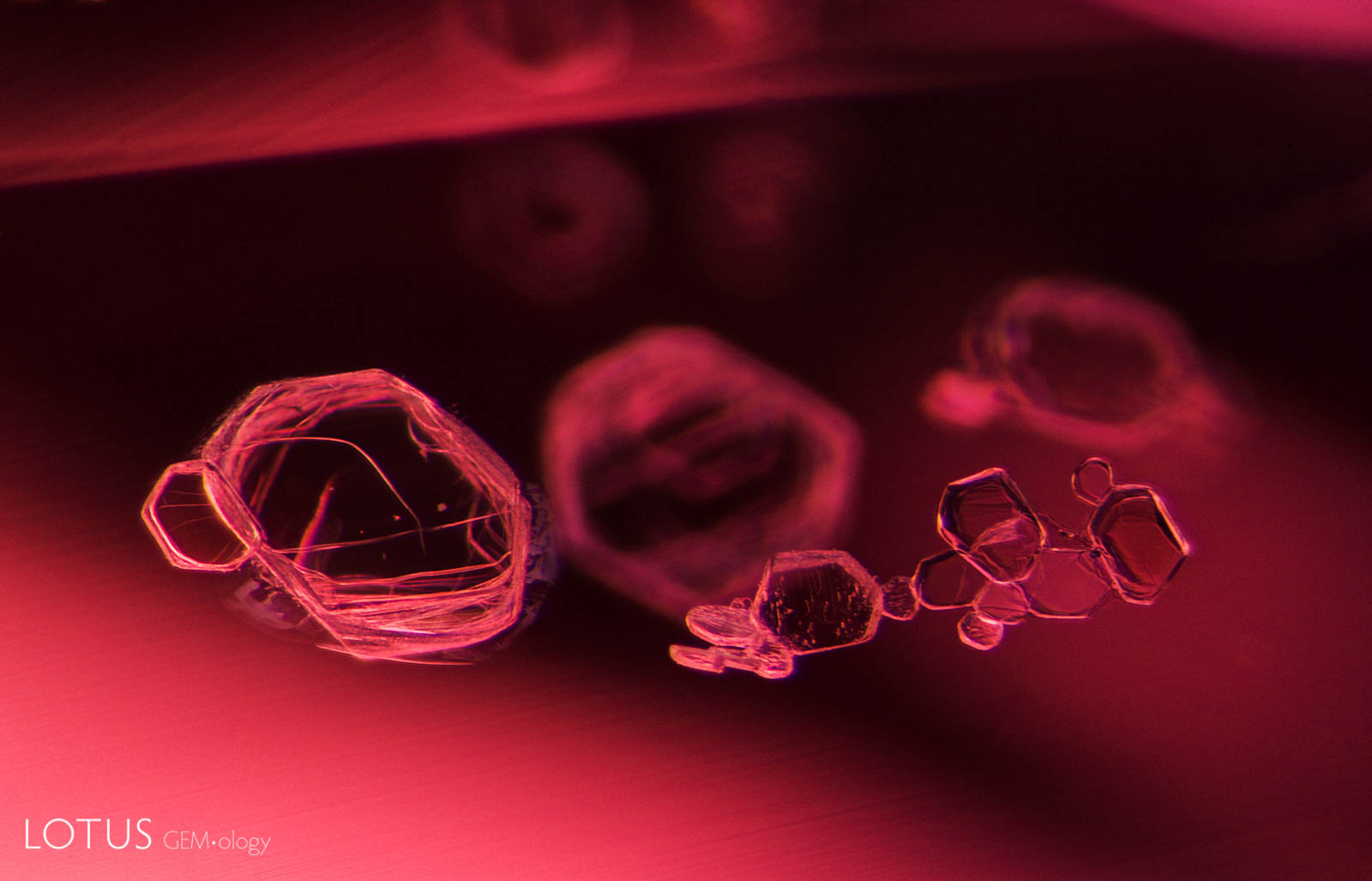 Small transparent crystals form clusters in a Vietnamese spinel. These tabular crystals are transparent and doubly refractive. Dark field illumination. Photo: E. Billie Hughes
Small transparent crystals form clusters in a Vietnamese spinel. These tabular crystals are transparent and doubly refractive. Dark field illumination. Photo: E. Billie Hughes
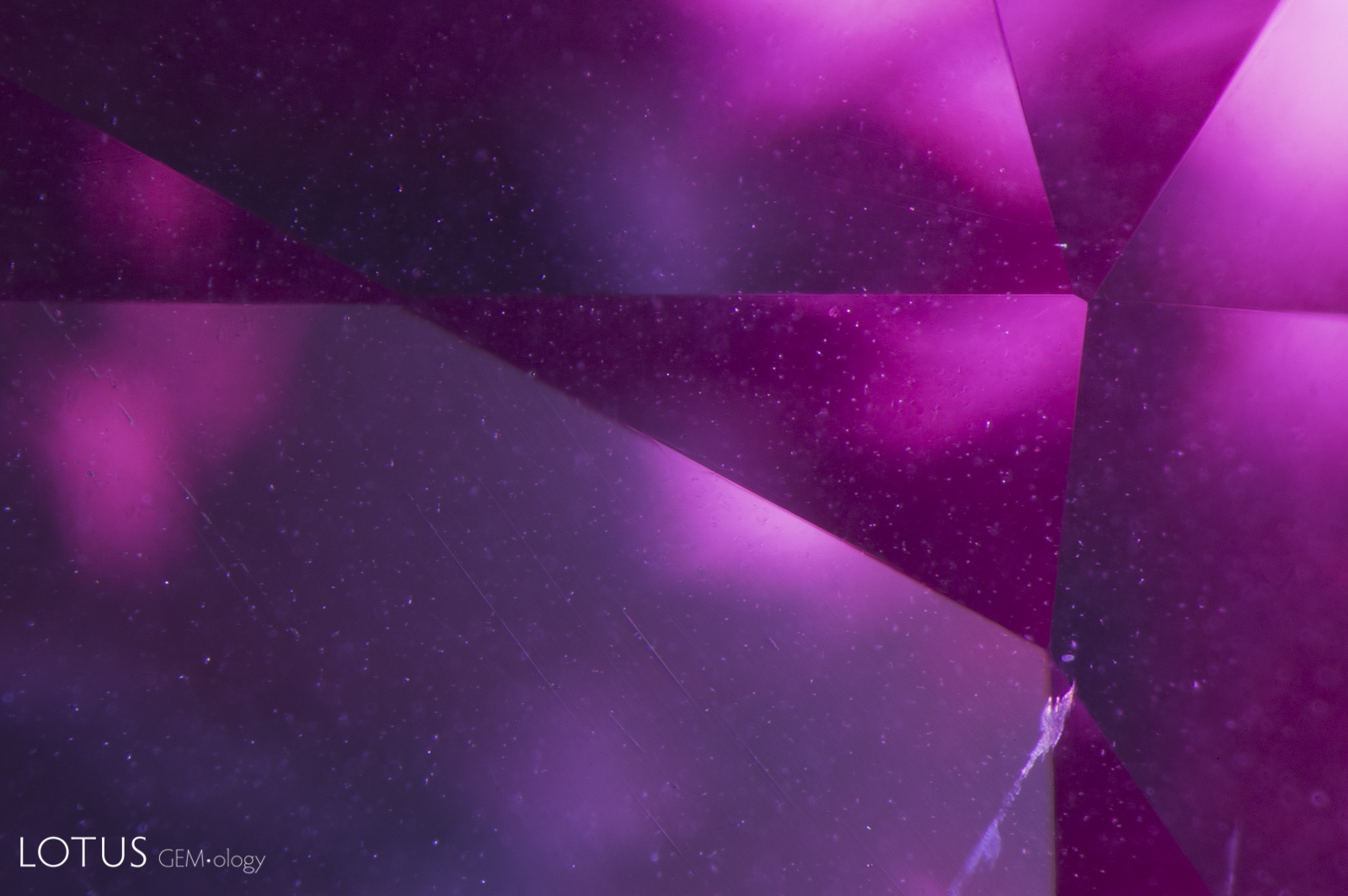 At first glance the tiny exsolved particles in this spinel from Mahenge, Tanzania, may look like specks of dust. Upon close observation we can see that they are actually scattered throughout the stone, not on the surface. These dust-like particles are a common feature in Mahenge spinel. Diffuse oblique fiber optic illumination. Photo: E. Billie Hughes
At first glance the tiny exsolved particles in this spinel from Mahenge, Tanzania, may look like specks of dust. Upon close observation we can see that they are actually scattered throughout the stone, not on the surface. These dust-like particles are a common feature in Mahenge spinel. Diffuse oblique fiber optic illumination. Photo: E. Billie Hughes
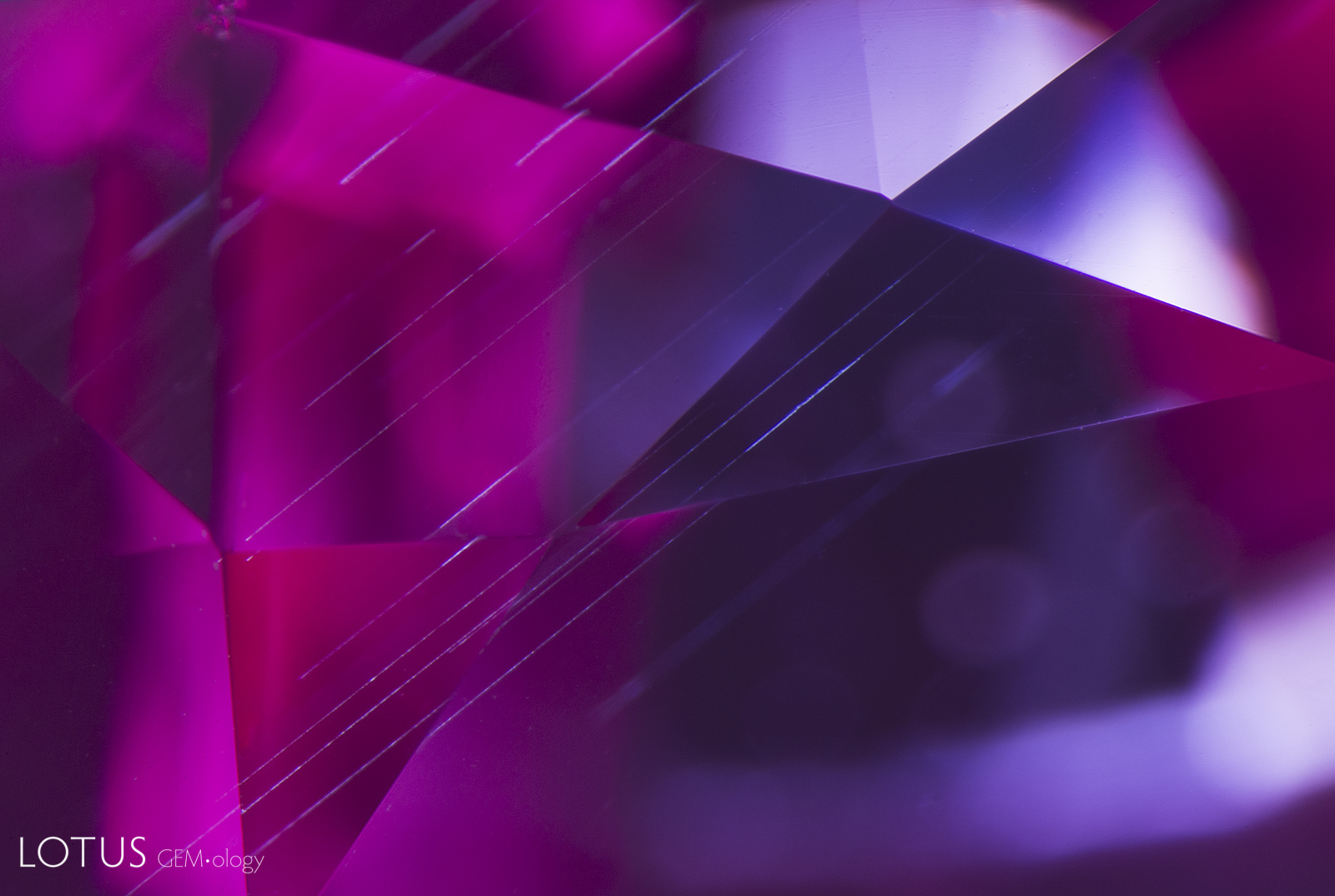 Another common feature in spinel from Mahenge, Tanzania, are this fine needle-like inclusions. These are most easily seen with fiber optic illumination, as shown here. Diffuse fiber optic illumination. Photo: E. Billie Hughes
Another common feature in spinel from Mahenge, Tanzania, are this fine needle-like inclusions. These are most easily seen with fiber optic illumination, as shown here. Diffuse fiber optic illumination. Photo: E. Billie Hughes
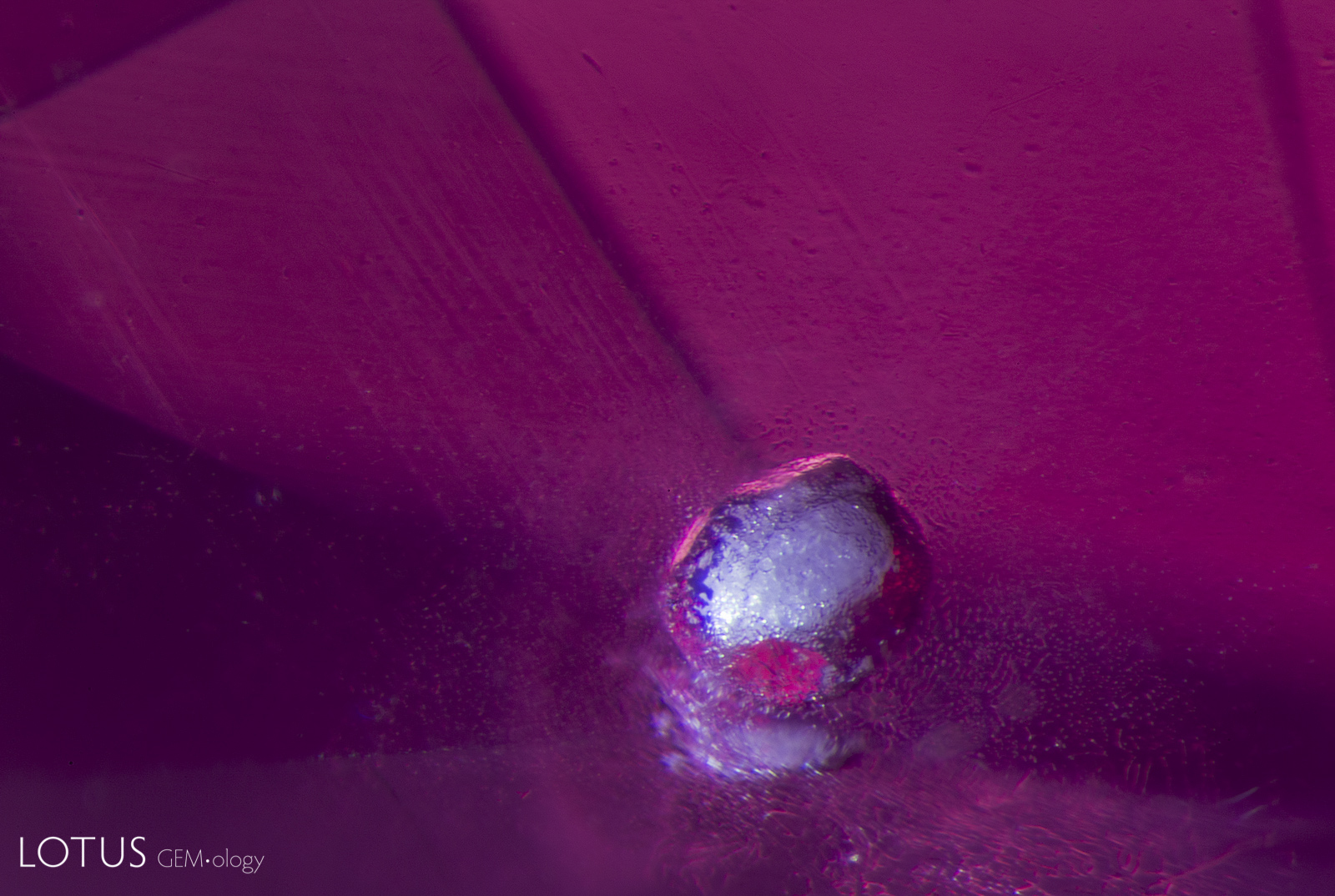 This melted crystal shows a “frosty” appearance similar to that of a snowball. The vast majority of spinels that we see in our lab are untreated, but this is a rare example of a heated spinel. The host of this melted crystal is a Mahenge, Tanzania, spinel. Darkfield + Diffuse oblique fiber optic illumination. Photo: E. Billie Hughes
This melted crystal shows a “frosty” appearance similar to that of a snowball. The vast majority of spinels that we see in our lab are untreated, but this is a rare example of a heated spinel. The host of this melted crystal is a Mahenge, Tanzania, spinel. Darkfield + Diffuse oblique fiber optic illumination. Photo: E. Billie Hughes
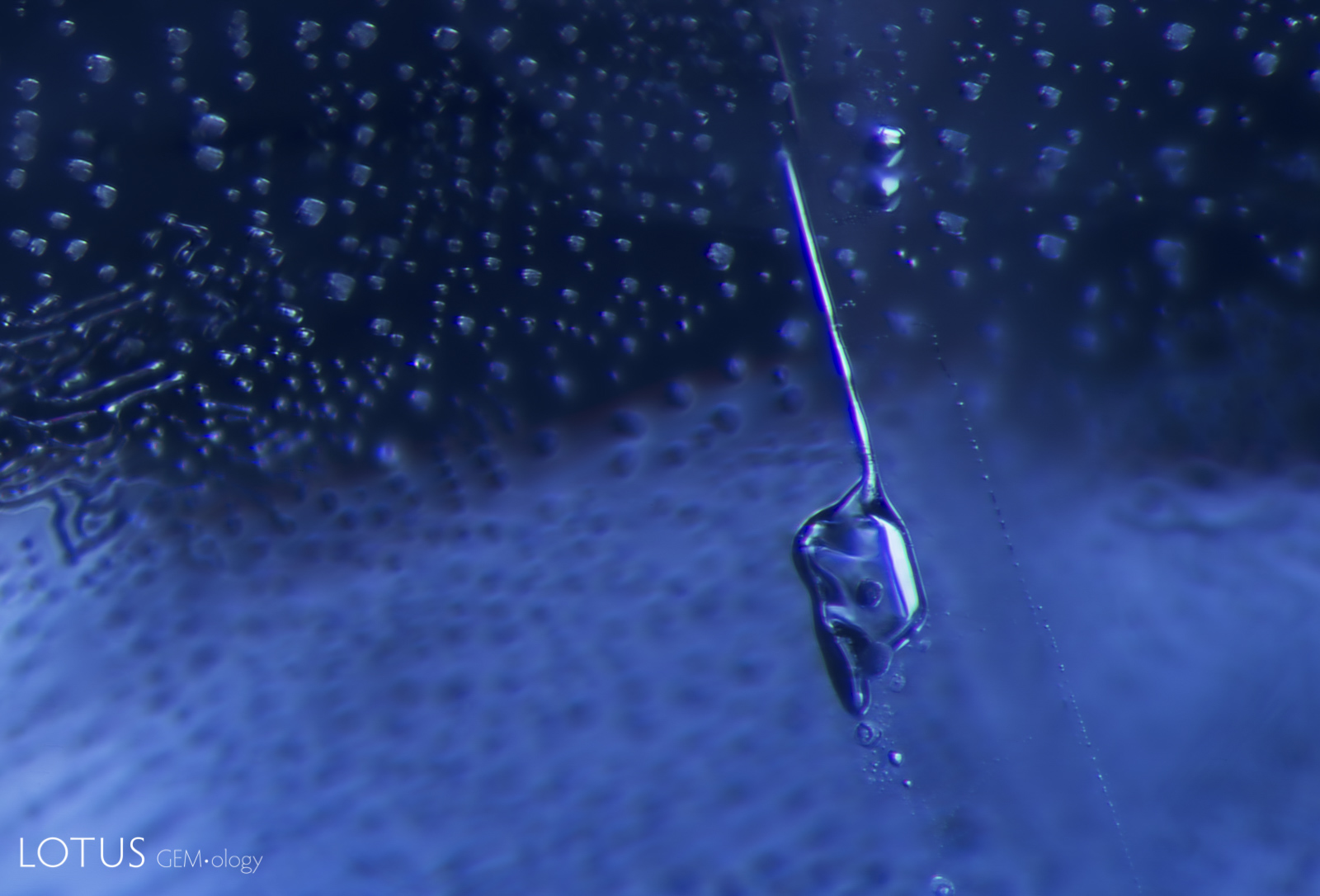 In another example of a heated spinel, this time in a cobalt-diffused stone, a melted crystal stands out against a backdrop of tiny heat-altered octahedra. Note how the faces of the crystals all display a highly reflective, glassy appearance, and the edges are rounded rather than angular. Dark-field illumination. Photo: E. Billie Hughes
In another example of a heated spinel, this time in a cobalt-diffused stone, a melted crystal stands out against a backdrop of tiny heat-altered octahedra. Note how the faces of the crystals all display a highly reflective, glassy appearance, and the edges are rounded rather than angular. Dark-field illumination. Photo: E. Billie Hughes

References & further reading
- Gübelin, E.J. and Koivula, J.I. (1986) Photoatlas of Inclusions in Gemstones. Zurich, Switzerland, ABC Edition, 532 pp.
- Gübelin, E.J. and Koivula, J.I. (2005) Photoatlas of Inclusions in Gemstones, Volume 2. Basel, Switzerland, Opinio Publishers, 830 pp.
- Saeseaw, S., Wang, W. et al. (2009) Distinguishing Heated Spinels from Unheated Natural Spinels and from Synthetic Spinels. Online report, April 2, Gemological Institute of America, 13 pp.
- Schmetzer, K., Gübelin, E. et al. (2000) Oriented inclusions in spinels from Madagascar. Journal of Gemmology, Vol. 27, No. 4, pp. 229–232
About the author
E. Billie Hughes visited her first gem mine (in Thailand) at age two and by age four had visited three major sapphire localities in Montana. A 2011 graduate of UCLA, she qualified as a Fellow of the Gemmological Association of Great Britain (FGA) in 2013. An award winning photographer and photomicrographer, she has won prizes in the Nikon Small World and Gem-A competitions, among others. Her writing and images have been featured in books, magazines, and online by Forbes, Vogue, National Geographic, and more. In 2019 the Accredited Gemologists Association awarded her their Gemological Research Grant. Billie is a sought-after lecturer and has spoken around the world to groups including Cartier and Van Cleef & Arpels. In 2020 Van Cleef & Arpels’ L’École School of Jewellery Arts staged exhibitions of her photomicrographs in Paris and Hong Kong.
Notes
First published in the Journal of The Gemmological Association of Hong Kong, 2017, Vol. XXXVIII, pp. 41–44).

